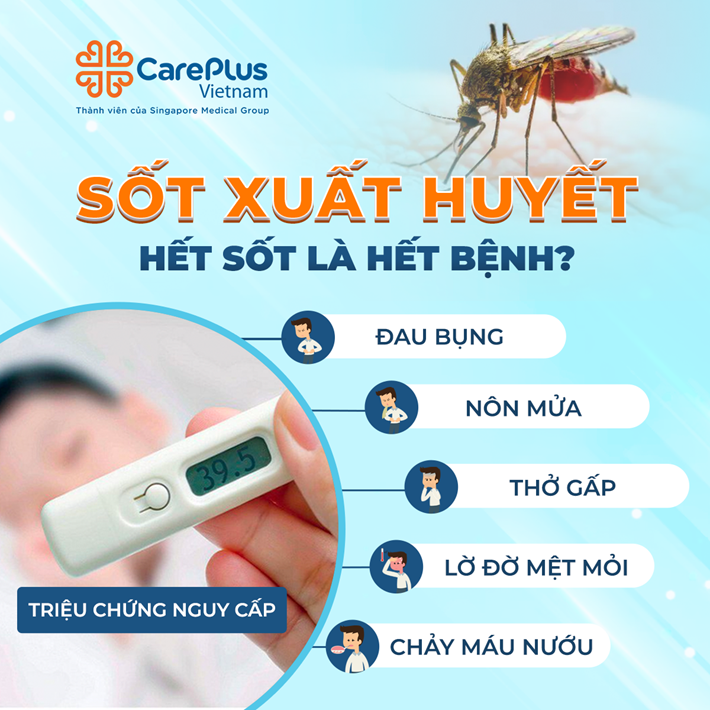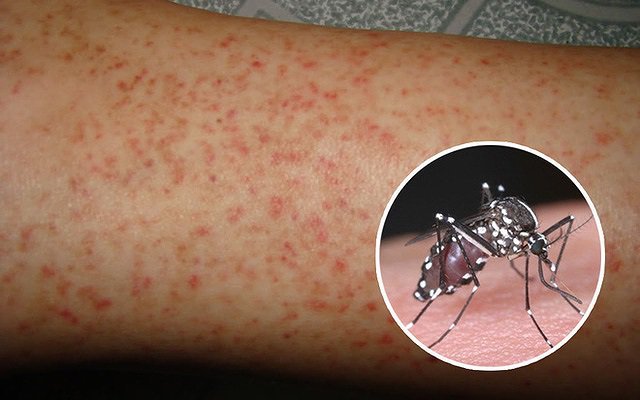Dengue fever - Is it cured when the fever is gone?
Many people think that if they have a fever, they are cured, but in fact most of the deaths occur after the body has cooled down.

7/26/2023 10:24:17 AM
Dengue fever is an acute infectious disease caused by a virus. It is currently the rainy season, so the number of cases is high. When infected with dengue fever, the patient will go through 3 different stages of the disease, namely: Fever stage, dangerous stage, recovery stage.
Dengue fever - Is it cured when the fever is gone?
When infected with dengue fever, in the first 3 days, the patient will have high fever, headache, body aches, eye pain. From the 4th day onwards is the most dangerous time for the disease. At this time, the patient can recover if properly cared for, but can also worsen with symptoms such as: Fatigue, nausea, pain in the liver area, abdominal pain, urinating little, ... If not treated in time, it can cause multiple organ failure, and even death after a few hours.
Because of the danger of the disease, when you see a decrease in fever or no fever, you still need to go for a check-up so that the doctors can determine whether you have recovered or not, or this is just the stage of decreasing fever before entering the dangerous stage. Therefore, the idea that no fever means recovery from dengue fever is not correct.

Stages of Dengue fever
The warning signs usually begin the first day or two after your fever goes away, and may include:
-
Severe stomach pain
-
Persistent vomiting
-
Bleeding from your gums or nose
-
Blood in your urine, stools or vomit
-
Bleeding under the skin, which might look like bruising
-
Difficult or rapid breathing
-
Fatigue
-
Irritability or restlessness
The critical stages:
This stage occurs from day 3 to 7 after the first day of fever. The patient may decrease or still have a fever, however, there may be some cases of secondary infection with signs of low platelets and blood concentration.
The warning signs in this stage may be: severe abdominal pain, persistent vomiting, rapid breathing, gum bleeding, blood in urine and fatigue. If these signs appear, the patient should be hospitalized immediately
Recovery phase:
After passing the dangerous phase from 1 to 2 days, the patient has no fever, health gradually recovers, blood pressure stabilizes, urinates more and is hungry. The test results gradually return to normal levels.
At this stage, the patient's family needs to pay attention to taking care of the patient carefully. If not taken care of carefully and properly, it can lead to pulmonary edema or heart failure. Therefore, do not ignore any abnormal symptoms even if the patient shows signs of recovery
Currently, it is the rainy season, so the number of cases of dengue fever continues to increase. The important thing is to be aware of the warning signs and different stages of the disease to detect early and provide timely medical care.